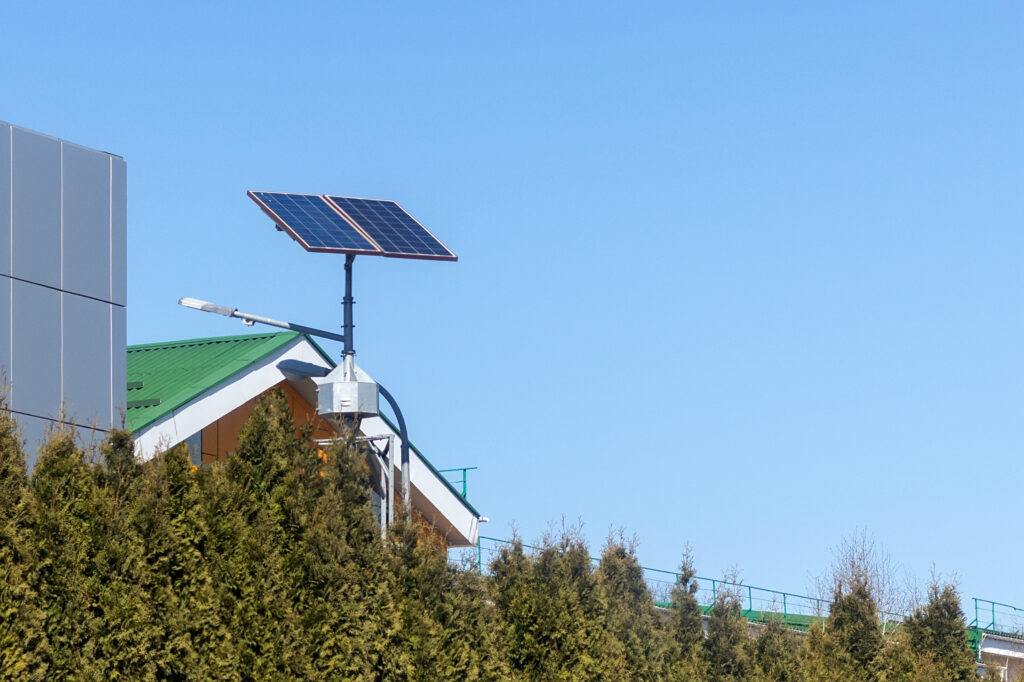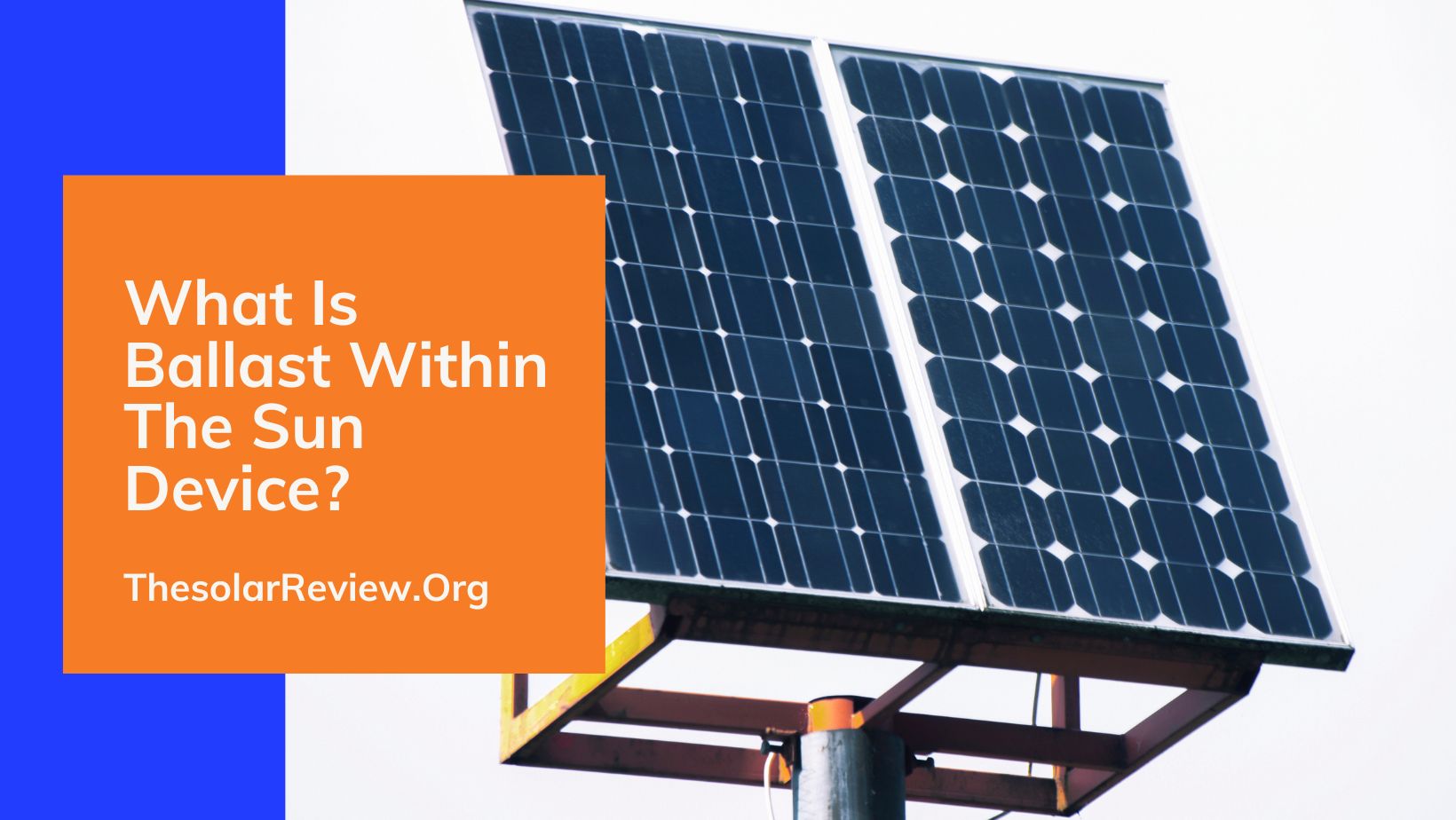What Is A Ballast Within The Sun Device? A ballast device in solar panel setup enables the preservation of the panels in areas on flat or low-slope roofs while not having to make holes. Unlike the usage of screws and mounts, a ballast device uses heavy materials to preserve solar panels in location.
This new manner of doing things would not require the roof, and it additionally makes sure the sun panels stay strong and work well for a long time.
1. Mounting Structure
The solar panels are placed on a unique frame that is made to maintain the weight of the panels and different substances frivolously.
2. Ballast Material
Thick materials like concrete blocks or pavers are carefully located around the solar panels to guide them. These heavy substances can weigh some hundred pounds for every panel.
3. Even Weight Distribution
The key to a fantastic ballast gadget is to make sure the weight of the ballast substances is spread out flippantly below the sun panels. This enables the roof to get an excessive amount of strain in a single location.
4. No Roof Penetrations
Unlike the old method of installing panels via drilling holes within the roof, a ballast system does not need any holes. This makes it much less probable for the roof to leak or get broken.
5. Wind Resistance
Ballast systems are designed to keep the panels from moving even when it’s windy. Engineers discern how much weight to put on a boat or ship based on the wind and different matters inside the location.
6. Professional Installation
Setting up the ballast machine successfully is vital for it to work nicely. Skilled sun installers know the way to figure out how much weight is needed to maintain the solar panels in the region and make certain they’re securely attached.
Ballast structures are often used to put solar panels on flat or low-slope roofs when the standard manner of attaching them to the roof is impossible or not desired. They are a perfect way to save your roof harm and leaks and additionally supply a sturdy location for solar panels.
Types of ballast device
Different varieties of ballast systems are used for solar panels. The type of device used relies upon matters like the roof, weather, and shape of the building. There are unique methods to maintain solar panels in unique locations.

1. Standard Concrete Blocks
Use Case: Suitable for flat or low-slope roofs with true load-bearing capability.
Description: Standard concrete blocks are positioned across the solar panel array to offer ballast. These are regularly the most effective and most potent ballast answers.
2. Spread Ballast Pavers
Use Case: Appropriate for flat roofs with weight limitations or when even weight distribution is critical.
Description: Instead of using solid concrete blocks, spread ballast pavers that are designed for this purpose distribute the burden more lightly, decreasing the hazard of point loading.
3. Non-penetrating mounts with Built-In Ballast
Use Case: Ideal for flat roofs in which roof penetrations aren’t preferred.
Description: Some sun mounting systems include integrated ballast alternatives. These systems use non-penetrating mounts that distribute the load throughout the roof, putting off the need for separate ballast substances.
4. Hybrid Ballast Systems
Use Case: It is suitable for locations with excessive wind situations or when extra ballast is needed.
Description: Hybrid structures integrate ballast materials, including concrete blocks, with additional fastening strategies to ensure the most balance. These are used in regions with stringent wind load requirements.
5. Adjustable Ballast Systems
Use Case: Appropriate for roofs with variable load-bearing potential or the ones that may shift over time.
Description: Adjustable ballast systems use ballast substances that can be modified or repositioned to house changes in roof load-bearing potential or movement.
6. Wind-Deflector Ballast Systems
Use Case: Useful in areas at risk of sturdy winds or wherein wind uplift is a subject.
Description: Wind-deflector systems include specifically designed ballast and deflector factors that assist in lessening the effect of wind uplift on the solar panels.
7. Integrated Green Roof Ballast Systems
Use Case: Suitable for eco-friendly installations and locations with favored inexperienced roofs.
Description: Integrated green roof ballast structures contain flowers and planting factors, including the roof’s environmental benefits.
8. Solar Panel Ballast Tables
Use Case: Useful for simplified designs and preferred installations.
Description: Solar panel producers often offer ballast tables that specify the endorsed weight and placement of ballast substances for their specific panels. These tables streamline the layout.
When deciding on a ballast machine for a solar panel setup, it’s vital to remember the unique conditions of the installation site, together with the roof type, nearby weather, and any load-bearing obstacles.
Professional solar installers or engineers generally assess those elements and endorse the most appropriate ballast system for each project to ensure the protection and stability of the solar panels.
How Many Tons Does A Ballasted Solar System Weigh?
The weight of a sun system with weights attached to it can be distinct based totally on how massive the sun panels are, what type of shape holds them up, what substances are used to feature weight, and what sort of wind there may be in that location. Here are some simple things to observe.
1. Solar Panel Array Size
The primary issue affecting the load of a ballasted solar system is the dimensions of the solar panel array. Larger arrays with more panels will be heavier.
2. Mounting Structure
The type of mounting structure used can also affect the system’s weight. Some mounting structures are designed to be lightweight, while others may be more enormous to provide extra balance.
3. Ballast Materials
The type and quantity of ballast substances used to play a widespread function within the system’s weight. Common ballast materials consist of concrete blocks, pavers, or ballast trays filled with gravel. The weight of those substances can vary.
4. Local Wind Load Requirements
Solar panel installations ought to meet neighborhood building codes and wind load requirements. The weight of the ballasted gadget is designed to meet those necessities, so areas with better wind loads can also require heavier ballast systems.
In common, a ballasted solar gadget can weigh approximately 3 to 5 kilos in step with the rectangular feet, which includes sun panels mounting shape and ballast substances. This is only a bet, and the actual weights can be very distinct.
It’s a quality to rent a professional sun installer or engineer who can parent out how much weight your assignment desires. This makes sure that it follows the rules for safety and building electricity for your area.
Conclusion: What Is A Ballast Within The Sun Device?
In simple terms, a ballast system in solar panel setups is a new way to keep panels in place on flat or slightly sloped roofs without needing to drill holes. Carefully putting heavy things like concrete blocks in certain places keeps the weight even and stops the roof from getting damaged by strong winds.
It’s essential to have an expert set up the ballast system, and there are different types for different situations. The weight of a solar system with weights on the ball depends on how big the solar panels are how they are mounted, and how strong the wind is in that area. In general, ballast systems are a dependable and robust way to make solar panels and the roof last longer.

